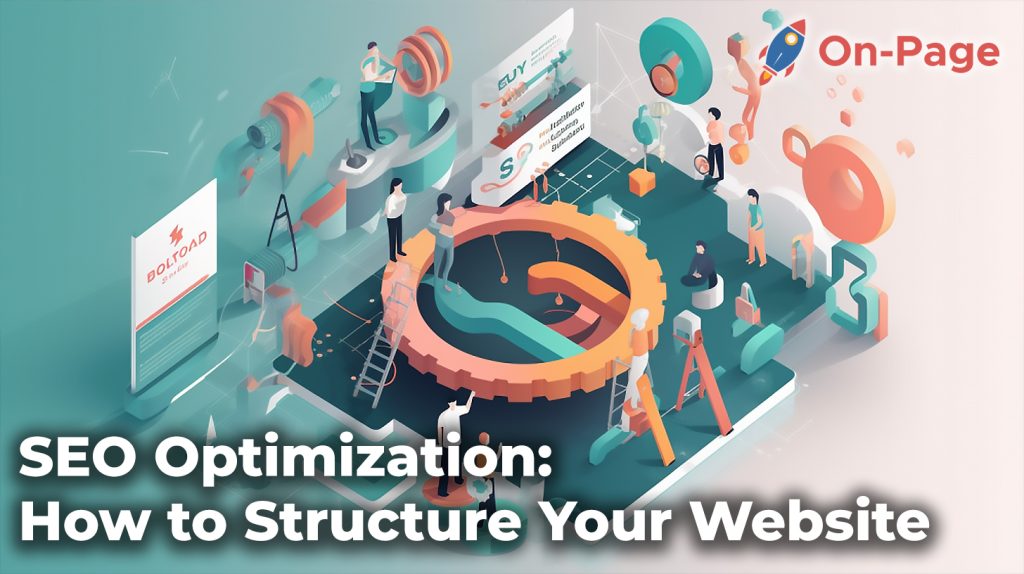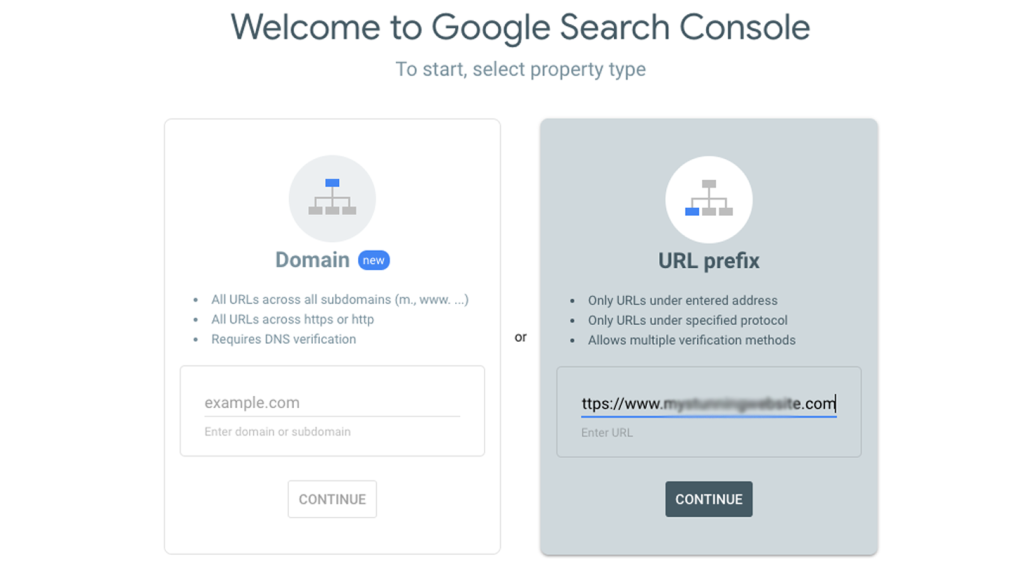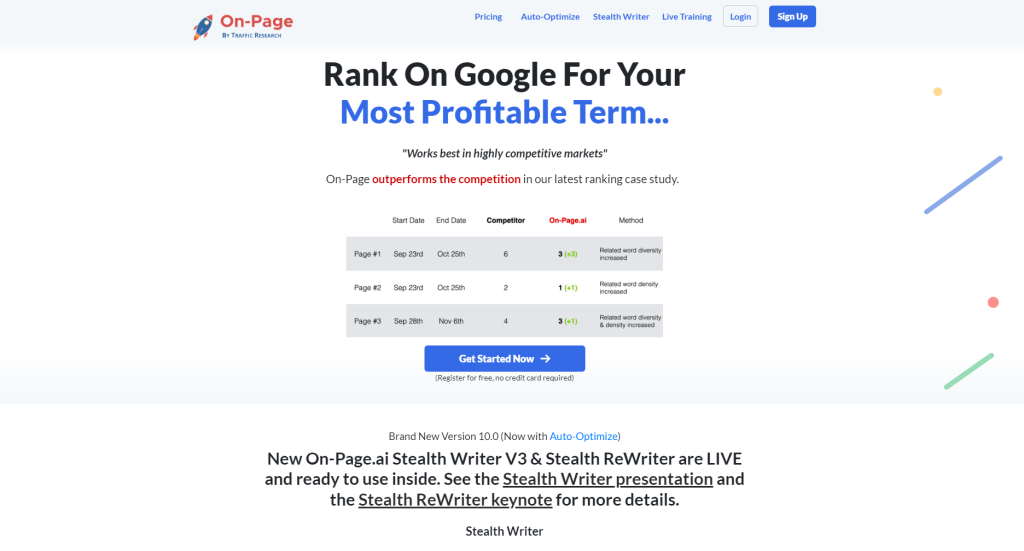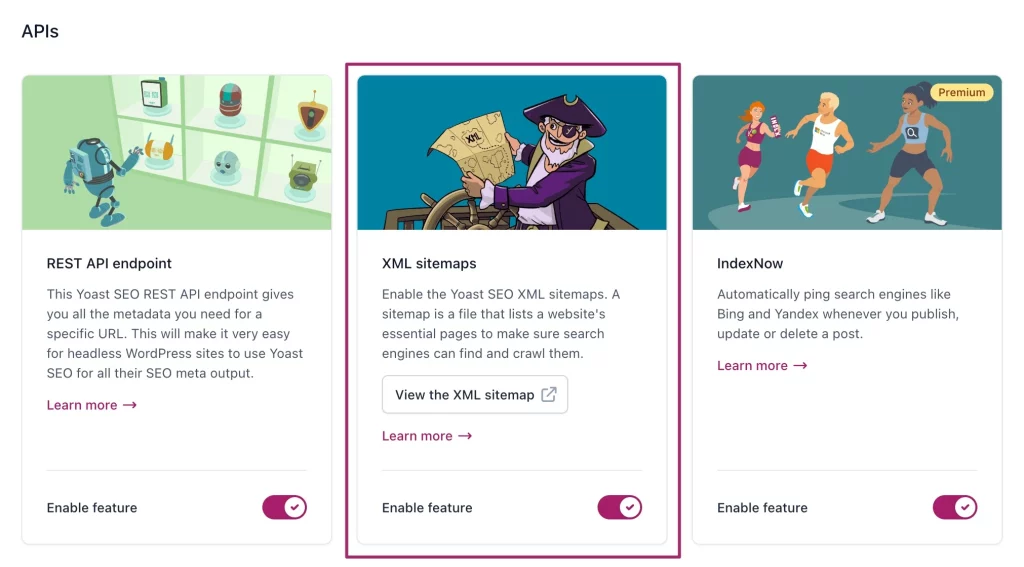
Are you ready to skyrocket your website’s visibility on search engine results? Imagine doubling, or even tripling, your organic traffic – it’s like finding the ultimate SEO “treasure.” In today’s ultra-competitive digital landscape, it’s not about sprinkling magical keywords throughout your content. It’s all about knowing how to structure your website for maximum visibility. Buckle up and join us as we explore the art of SEO optimization that can elevate your site from being buried in Google’s abyss to shining in the spotlight of search results!
When optimizing website structure for SEO, it’s important to have a clear hierarchy of pages, utilize internal linking to connect relevant pages, and make navigation easy and intuitive for users. Other helpful tips include organizing content into categories and using descriptive URLs. Ultimately, creating a well-structured website that is user-friendly and easy to navigate will lead to higher rankings in search engines and a better user experience.
Importance of SEO in Website Structure
When it comes to optimizing your website for search engines, the structure of your website plays an important role. A well-structured website can help search engines better understand your content and improve your chances of ranking higher in search results. In fact, a good site structure is crucial for SEO success.
Think of the structure of your website as the blueprint of your online presence. Without a solid foundation, your website won’t be able to perform well and reach its full potential. Just like a building’s foundation, your site’s structure needs to be strong and reliable to ensure long-term success.
A good site structure can help you increase visibility on search engines such as Google by improving indexability and crawlability. This means that search engines will be able to crawl all the pages on your website faster and more efficiently, leading to better exposure and higher chances of ranking in search results.
Some people argue that keywords are still the most important factor when it comes to SEO, but while keywords do play a significant role, a well-structured website is equally important. With the rise of artificial intelligence, voice search, and mobile-first indexing, the structure of your website has become more critical than ever before.
To put it simply, think of SEO optimization as a puzzle where each piece represents an essential component. The structure of your website is one of those puzzle pieces without which you cannot complete the picture. It might seem insignificant at first glance, but it is crucial for overall success.
Now that we’ve established how important website structure is for SEO, let’s take a closer look at site hierarchy and indexing.
- A good website structure is crucial for SEO success as it helps search engines understand your content better, improves indexability and crawlability, and increases visibility on search engines like Google. Keywords are important, but a strong site structure is equally essential in the age of artificial intelligence, voice search, and mobile-first indexing. Think of SEO optimization as a puzzle, where each piece represents an essential component, and the structure of your website is one of those pieces without which you cannot complete the picture. Therefore, it is vital to have a strong foundation for your online presence that can ensure long-term success.
Site Hierarchy and Indexing
Site hierarchy refers to how pages are organized within your website. Good site hierarchy allows users to navigate through your pages easily and helps search engines understand your website better. Creating a logical hierarchy is essential for SEO success because it can help improve indexation, as well as user experience.

When pages on your website are organized hierarchically, it helps search engines crawl all the relevant pages more easily and without missing any. This improves the chances of all your pages being indexed and appearing higher in search results.
A typical website hierarchy usually starts with the homepage at the top followed by category pages. These category pages are then divided into subcategories and so on. The organization should be intuitive, reflecting how users would expect to find information about your products or services.
Some people argue that having a flat site architecture with fewer clicks required to access each page is preferable to deep site architecture. However, while flat architecture might seem convenient for users, it isn’t always feasible, especially for larger sites with many pages. It’s important to strike a balance between usability and appropriate hierarchy.
Think of site hierarchy and indexing like a library, where each book represents a page on your website. A good library has books organized in cohesive categories to make navigation easier for readers. Similarly, creating a good site hierarchy will make it easier for users and search engines alike to find the information they’re looking for within your website.
Now that we’ve explored the importance of site hierarchy and indexing on SEO success let’s take a closer look at the key components that make up an optimized website structure.
- According to a study by Moz, websites with proper internal linking and a well-structured hierarchy can experience up to a 40% increase in search engine traffic.
- A 2020 survey conducted by HubSpot found that websites with a clear and organized structure had a 13% higher average time spent on the site by users compared to those without a proper structure.
- Research conducted by SEMrush in 2021 revealed that web pages that follow a flat architecture with fewer than three levels of depth have an increased probability of ranking higher on Google search results by 22%.
User Experience and Bounce Rate
User experience is a critical component of website structure optimization. If your website is hard to navigate or doesn’t provide relevant information, it could lead to a high bounce rate, low engagement, and reduced rankings in search engines. Bounce rate refers to the percentage of visitors who leave your website after viewing only one page. Hence, you need to design your website with user intent in mind, making sure that users can easily find what they’re looking for and get a satisfactory experience from their visit.

To illustrate this point better, let’s say that you run an e-commerce clothing store. When a visitor lands on your product page, they should be able to see multiple high-quality images of the item, have easy access to product reviews, view detailed specifications such as size, color options and pricing, and checkout in just a few clicks. If any of these elements are missing or hard to access, users may abandon the site altogether and never return.
A great user experience may lower bounce rates, keep visitors engaged on your website for longer periods and improve conversion rates. According to a study conducted by HubSpot, websites with an average bounce rate between 26% – 40% generated more leads than sites with higher bounce rates. This proves that providing an excellent user experience can translate into real business value.
Some may argue that minimalist design – stripping away everything but essential features- is the best approach for reducing bounce rates while others may prefer creating engaging content as their secret sauce for retaining visitors. The truth is that both approaches can work well if executed correctly. Designing with minimalism allows users to focus on essential elements such as navigation menus while engaging content encourages continuous interaction with your site.
In the following section, we’ll discuss key components of website structure optimization that can contribute significantly towards building user-friendly websites.
Key Components of Website Structure Optimization

Optimizing your website structure is about designing a layout that is easy to navigate, visually pleasing, and has effective internal linking. The key components are:
Imagine your website as a house, with the homepage being the front door. As visitors move through your site, they’re discovering new rooms (pages) and may need help understanding how each room relates to others. Your website should be organized in a hierarchy with important information easily accessible through navigation bars and functional buttons. By keeping all elements of your pages logically arranged, visitors can more efficiently discover the content they’re interested in.
For instance, let’s say you run a law firm website that includes four primary practice areas: bankruptcy law, immigration law, personal injury law, and DUI law. Organize these service areas into clearly labeled categories that visitors can navigate through. Since most people will find legal services through an online search engine, having high-quality landing pages for each of these categories will help search engines understand what the pages are all about.
Effective internal linking and proper categorization of products or services makes it easier for search engine crawlers to crawl and index your site faster eventually leading to better SEO results. According to data from Moz.com- an industry leader in SEO- pages with more internal links tend to rank higher in search engine results than those that have limited linking.
Some may argue that excessively categorizing content can create a complex navigational system making it harder for visitors to find what they seek while oversimplifying categories may lead to sub-par user experience when trying to navigate the site. Finding an ideal balance between both arguments can deliver optimal user experience while helping search engines weigh the importance of each page.
Continue reading to explore technical aspects like mobile-first design and responsive web design, which are equally critical for website structure optimization.
Navigation and Internal Linking
When it comes to website structure optimization, navigation and internal linking are key components for increasing visibility and improving SEO rankings. Navigation refers to the way your website is organized and the paths users take to access different pages, while internal linking is how pages on your site are connected with each other through clickable links.
Think of your website as a city and navigation as the road system that helps visitors move around. Without proper navigation, users can easily get lost and leave your site frustrated. On the other hand, internal links are like bridges that connect different neighborhoods of the city, making it easier for users to get from one point to another.
From an SEO standpoint, including internal links in your content is important because it helps search engines understand the relationship between your pages and how they fit into the hierarchy of your site. It also spreads “link juice” or authority from one page to another, which ultimately can improve rankings.
Some argue that too many internal links can be overwhelming for users and lead to a poor user experience. However, if done correctly with relevant anchor text and proper placement, internal links can enhance user engagement by providing additional resources and related content.
Internal linking is similar to a choose-your-own-adventure book where readers have the option to navigate through different storylines based on their interests. By including internal links within your content, you are giving users the opportunity to explore different topics on your site without having to perform a separate search.
Let’s dive deeper into how you can optimize your navigation and internal linking strategy for maximum SEO success.
Content Grouping and Topical Relevancy

In addition to navigation and internal linking, content grouping and topical relevancy play a crucial role in optimizing your website structure for SEO. Content grouping refers to organizing pages with similar content into clusters or categories, while topical relevancy focuses on creating content that aligns with user intent and search queries.
Consider a cooking website that has recipes for both vegan and non-vegan meals. By grouping these recipes into separate categories, it makes it easier for users to find what they are looking for based on their dietary preferences. This also allows search engines to identify the main topics of your site and improve the chances of ranking for relevant keywords.
From an SEO perspective, focusing on topical relevancy is important because it helps you create content that better matches what users are looking for, ultimately leading to higher engagement, lower bounce rates, and improved rankings. It also helps search engines understand the purpose of your site and the value it provides to users.
Some argue that too much focus on topical relevancy can lead to keyword stuffing and sacrificing readability in favor of SEO optimization. However, by creating relevant and high-quality content that satisfies user intent, you can achieve both SEO success and a positive user experience.
Content grouping and topical relevancy can be compared to organizing a library. Just as books are grouped together based on genre or topic, webpages should also be organized into categories based on similar themes or content. Additionally, just as libraries aim to provide resources that align with the interests of their readers, websites should strive to create content that reflects user intent and search queries.
Now that we have explored navigation and internal linking as well as content grouping and topical relevancy, let’s move on to discuss technical SEO considerations for website structure optimization.
Technical SEO Considerations

Technical SEO is an essential part of website structure optimization and involves addressing the underlying technical elements of a site that impact its visibility in search engines. This includes everything from optimizing your site speed, to ensuring proper canonicalization and avoiding duplicate content.
One important technical consideration for SEO optimization is website speed. Slow loading websites can significantly impact bounce rates and user experience, leading to lower search engine rankings. To overcome this, ensure that your website is optimized for speed by reducing image sizes, using content delivery networks (CDNs), and compressing files where possible.
Another critical technical aspect of website structure optimization is ensuring that your site is properly indexed by search engines. This means creating accurate XML sitemaps, verifying site ownership with platforms like Google Search Console, disallowing duplicate pages or content through official guidelines, as well as avoiding crawl errors such as broken links or 404 pages.

There are different ways to approach technical SEO optimization, including utilizing third-party tools and plugins like Yoast or SEMrush to check for technical errors on your site. However, it’s important to note that these tools often oversimplify technical optimization issues and may not address the root cause of the problem.
Think of technical SEO as the foundation upon which you build your house. Without a solid foundation, your house will crumble. Similarly, without proper technical SEO implementation, your website’s visibility in search engines will be weak or even non-existent.
Mobile-First & Responsive Design
Mobile-first design refers to designing websites from a mobile perspective first before scaling it up to desktop size, while responsive design involves creating sites that adjust accordingly depending on the device being used to access them. Both are crucial components of website structure optimization.
With mobile-first and responsive design, you can create websites that are optimized for all screen sizes, making them more accessible and engaging for users, regardless of the device they use. This can improve user experience and lower bounce rates, resulting in higher search engine rankings.
Additionally, with Google’s shift to mobile-first indexing, mobile optimization has become critical for SEO success. This means that websites need to be designed with mobile users in mind, ensuring that they load quickly on mobile devices, have a responsive layout and easy navigation.
However, some argue that implementing mobile-first or responsive design may not always be feasible or necessary for certain types of websites or businesses. For instance, businesses targeting primarily desktop users might benefit more from optimizing their sites exclusively for desktop rather than focusing on mobile-first design.
Think about your website as a houseplant – it needs the right environment to thrive. Just like plants that need the right amount of sunlight, water and air circulation to grow properly, websites need responsive and adaptable designs to flourish in today’s digital landscape.
Monitoring and Adapting Your Structure for SEO Success
Creating a solid website structure is just the first step in achieving maximum visibility and success in SEO. In order to ensure that your website continues to perform well, it’s important to regularly monitor and adapt your structure based on data-driven insights.
One way to do this is by monitoring your site analytics regularly. Pay close attention to metrics like bounce rate, time spent on site, and pages per session. These can indicate whether users are finding what they need on your site or if there are issues with navigation or content.
Additionally, conducting regular user testing can provide valuable feedback on the usability of your site structure. By having real people navigate your website and provide feedback on their experience, you can identify pain points or areas where improvements could be made.
It’s also important to stay up-to-date with changes in search engine algorithms and updates. While On-Page.ai does an excellent job keeping up with these changes, it’s also important for webmasters to stay informed about the latest news in SEO trends. This can help guide decisions regarding website structure and ensure that your efforts align with current best practices.
Think of website structure as a living organism – it needs nourishment, care, and attention in order to thrive. Regularly monitoring and adapting your structure ensures that it will continue to evolve and improve over time.
Finally, when making changes to your website structure, it’s important to measure the impact of those changes on your search engine rankings and other key metrics. On-Page.ai offers tools for tracking keyword rankings and other important metrics so you can see how your efforts are paying off.

In conclusion, maintaining a strong website structure is crucial for SEO success. By regularly monitoring and adapting your structure, you can ensure that your website is optimized for both search engines and users. And when it comes to optimizing your website structure, there’s no better tool than On-Page.ai. With its advanced AI-powered features and user-friendly interface, On-Page.ai makes it easy to build a website structure that promotes visibility and success in search engine rankings. Sign up today to start improving your SEO!
Commonly Asked Questions
Are there any specific steps to follow when optimizing the website structure for SEO?
Yes, there are specific steps to follow when optimizing the website structure for SEO. Here are some key points to keep in mind:
1. Simplify your site navigation: Ensure your website is easy to navigate, with a clear and concise hierarchy. Users should be able to find what they are looking for quickly without having to click through multiple pages.
2. Optimize your URLs: Use descriptive and informative URLs that include relevant keywords. This helps search engines and users understand what your page is about.
3. Create unique and compelling content: Develop original content that is both engaging and informative. This not only helps attract visitors but also encourages other websites to link back to your site, which can improve your search engine rankings.
4. Use header tags: Use header tags (H1, H2, H3) to break up your content into easily digestible sections and to help search engines understand the structure of your page.
5. Include internal linking: Link internally between pages on your site to help guide users and spread link equity throughout your site.
By following these steps, you can improve the structure of your website for optimal SEO performance. According to a study by Backlinko, sites with well-structured URLs tend to rank higher on Google’s search engine results pages (SERPs), showing the importance of keeping a clean URL structure in mind while designing a website.
How does the website structure affect overall search engine ranking?
The website structure plays a crucial role in determining the overall search engine ranking. A well-structured website ensures that search engines can easily crawl and index all of your content. This not only makes it easier for search engines to understand what your site is about, but it also helps them to identify relevant keywords and phrases.
According to research by Moz, websites that have clear and concise page structures are more likely to rank higher in search engine results pages (SERPs). The study shows that a website with a shallow page depth (i.e., fewer clicks required to access content) tends to perform better than one with a deeper page depth.
Furthermore, structuring your website can also increase user engagement, which is another ranking factor. If users find it easy to navigate your site and locate the information they are looking for, they are more likely to stay on your site longer and engage with your content.
To optimize your website structure for search engines, consider implementing techniques such as using descriptive and relevant URLs, optimizing internal linking structures, and organizing content into categories or topics.
In conclusion, the website structure affects overall search engine ranking significantly. A well-structured website will not only help you rank better in SERPs but also improve user experience. So be sure to pay close attention to your website’s structure when optimizing for SEO.
What tools or resources are available to improve website structure for improved SEO performance?
Improving website structure for better SEO performance requires a variety of tools and resources. Here are some of the most effective:
1. Site Audit Tools: These tools can scan your website and provide a comprehensive report on any technical issues that may be hindering your site’s SEO performance. Examples include SEMrush, Ahrefs, and Google Search Console.
2. Keyword Research Tools: To determine which keywords to target, you need to conduct thorough research. Several keyword research tools like Google Trends, Ubersuggest and Keyword Tool make the process easier by providing data on relevant keywords, their search volume and competition.

3. Site Mapping Tools: A well-organized site structure is crucial for ranking higher in search results. Creating an XML sitemap helps search engines navigate your site quickly and easily, making it more likely to appear in search results. Yoast SEO is a popular tool that enables users to create an XML sitemap effortlessly.

4. Analytics Tools: Tracking web traffic and user behavior is vital for analyzing the effectiveness of your site structure changes. Google Analytics provides detailed data on site visitors’ demographics, behavior, on-pages sessions and more.
By taking advantage of these resources, you can optimize every area of your website structure for maximum visibility, driving improved SEO performance statistics such as higher rankings on SERPs (Search Engine Results Pages), increased organic traffic rates & engagement levels among others.
How frequently should I review and adjust website structure to maintain optimal SEO performance?
Great question! The frequency at which you should review and adjust your website structure for optimal SEO performance largely depends on your website’s size, niche, and amount of new content added regularly.
However, in general, it’s recommended to review and make adjustments to your website structure at least once a year. This will help ensure that your website is up-to-date with the latest SEO algorithms and strategies.
Some key areas to focus on during a website review include:
1. Clear organization of content
2. Proper use of header tags (H1, H2, etc.)
3. Optimization of meta tags (title tags, description tags)
4. Elimination of broken links and 404 errors
5. Use of internal linking
According to a survey by SEMrush, websites that audit their structures at least once every six months perform 21% better than those that don’t. Furthermore, Google has stated that they make updates to their algorithms around 500-600 times per year, making it crucial to stay up-to-date with the latest changes.
In conclusion, while the frequency of reviewing and adjusting your website structure may vary depending on your specific circumstances, it’s important to dedicate time periodically to maintain optimal SEO performance.
What are the key elements of a well-structured website for SEO purposes?
A well-structured website for SEO purposes incorporates several key elements that help boost its visibility in search engine results pages (SERPs). Firstly, having a clear site hierarchy with organized and easy-to-navigate pages is crucial. This allows search engines to crawl and index your site efficiently.
Secondly, optimizing website content with relevant keywords and metadata is essential. According to research by Ahrefs, the top-ranking pages on Google contain an average of 1,890 words and use target keywords appropriately within the content. Accurate metadata such as page titles and descriptions also help search engines understand the relevance of your site.
Thirdly, ensuring the website’s mobile-friendliness is another significant factor driving traffic and engagement. More than 50% of all internet searches are now conducted from mobile devices (Source: Statista), so having a responsive design that fits any screen size will improve user experience and ultimately help increase conversions.
In summary, a well-structured website for SEO purposes must have clear site hierarchy, optimized content with relevant keywords and metadata, and a mobile-friendly design to ensure maximum visibility. By incorporating these elements into your website’s structure, you can set yourself up for success in driving traffic and ranking higher in SERPs.
Ensure your content is optimized for high-quality content and optimal ranking with the help of On-Page.ai. AI-powered features like the Stealth Writer and ReWriter will take your SEO process to the next level. Sign up today to get started.




